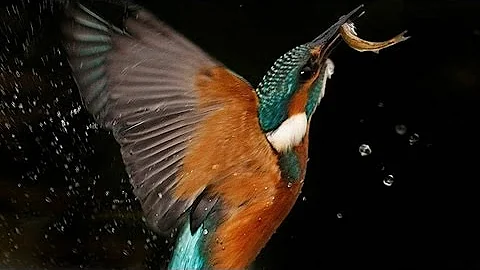
1, kingfisher skeleton. The kingfisher's food is mainly fish, and it also eats crustaceans and a variety of aquatic insects. It can use its thick beak to make holes in the earth cliffs to make its nest.

2, huge toad.

3. A very rare blue bee.

4, the black beauty of the genus Iron Chopsticks.

5. Termites don’t just build nests, they also build “skyscrapers”.

6, atlantic wolffish . Creepy but affectionate fish.

7. I have only seen black fungus and white fungus . This is the first time I have seen this pink fungus .

8. This lobster is hermaphroditic. This coloring only occurs once in every 50 million lobsters.

9. This is a picture of a dove that seems to be crowned.

10, what a cucumber looks like under ultraviolet light.

11, candy-like stones, located in Faroe Islands .

12. These furry, rare and "cold-resistant" pig breeds are called Mangalitsa. Native to Hungary , they are said to repel bears.

13. A unique plant in the Kilimanjaro Mountains: the Qifeng Qianlimu, which makes people feel like they have arrived in an alien world.

14, Pseudomonas prophylactica. Doesn't look much like a plant.

15, beautiful Kia mushroom. The requirements for the growth environment are extremely strict. It cannot grow if there are slight changes in sunlight, moisture, soil, etc., and it is completely impossible to cultivate artificially.

16, fluorite crystal ribbon.

17, hummingbird-shaped icicles.

18. The juice spilled on the table looks like a pig.

19, Polyporus purpurea, showing beautiful violet color.

20, morning glow lightning.

21. The triple waterfall located in Lebanon is a stunning creation created by nature.

22, Canada Abraham pond.

23, dazzling blue mushroom with smooth and round surface.

24. The natural pebbles on the beach are piled together to form a beautiful landscape.

25, the huge red sand dunes of Sossusvlei in the Namibian desert.

26. The wonder of four consecutive stars photographed in Africa: Mars, Venus, Saturn and Jupiter are in a line.

27. The night view of Warsaw, Poland, looks like a scene from an anime. The starry sky behind the high-rise buildings is really beautiful.

28, tulips blooming in the snow.





















